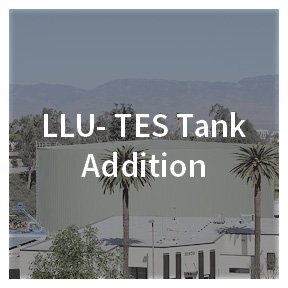Thermal Energy Storage
Overview
Thermal Energy Storage (TES) is a way of producing cooling (or heating) at one point in time and using at another. Common TES systems include the storage of chilled water or hot water in a stratified tank. TES systems are generally either full storage or partial storage systems. TES systems gain their major economic advantage from the difference between on-peak (daytime) and off-peak (night-time electric energy rates and demand charges. Since electricity is the primary energy source often used for cooling, chilled water TES is more common than hot water TES (heating is generally fueled by natural gas, which is not subject to time-of-use price differentials). Full storage systems provide all the cooling from the TES system during a certain part of the day (generally on-peak hours) with cooling equipment shut off. During other hours, the cooling equipment is operating at a higher load than required to meet the instantaneous load, with the cooling surplus stored. Partial storage systems typically operate chillers at a constant rate over the full day. Peak loads are met utilizing a mix of stored cooling plus instantaneous chiller-produced cooling. During lighter loads, the excess capacity from the chiller is stored. Partial storage systems allow for the smallest central plant sizes. Though full storage systems can achieve greater energy cost savings than partial storage systems, the amount of cooling equipment and TES capacity (and thus the capital cost) is generally greater with full storage systems than with a partial storage system.
Why Goss Engineering
Goss Engineering has extensive experience in the planning, design, and construction management of thermal energy storage (TES) systems. With a properly designed thermal energy storage system, Goss Engineering can help you:
- Reduce Required Equipment Capacity (Chillers, Cooling Towers, and Pumps)
- Reduce Overall Energy Consumption
- Lower Energy Costs
- Reduce Maintenance Costs

